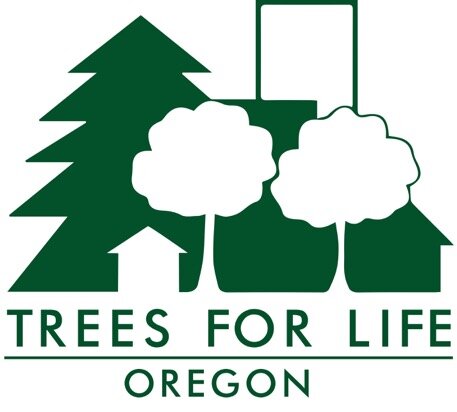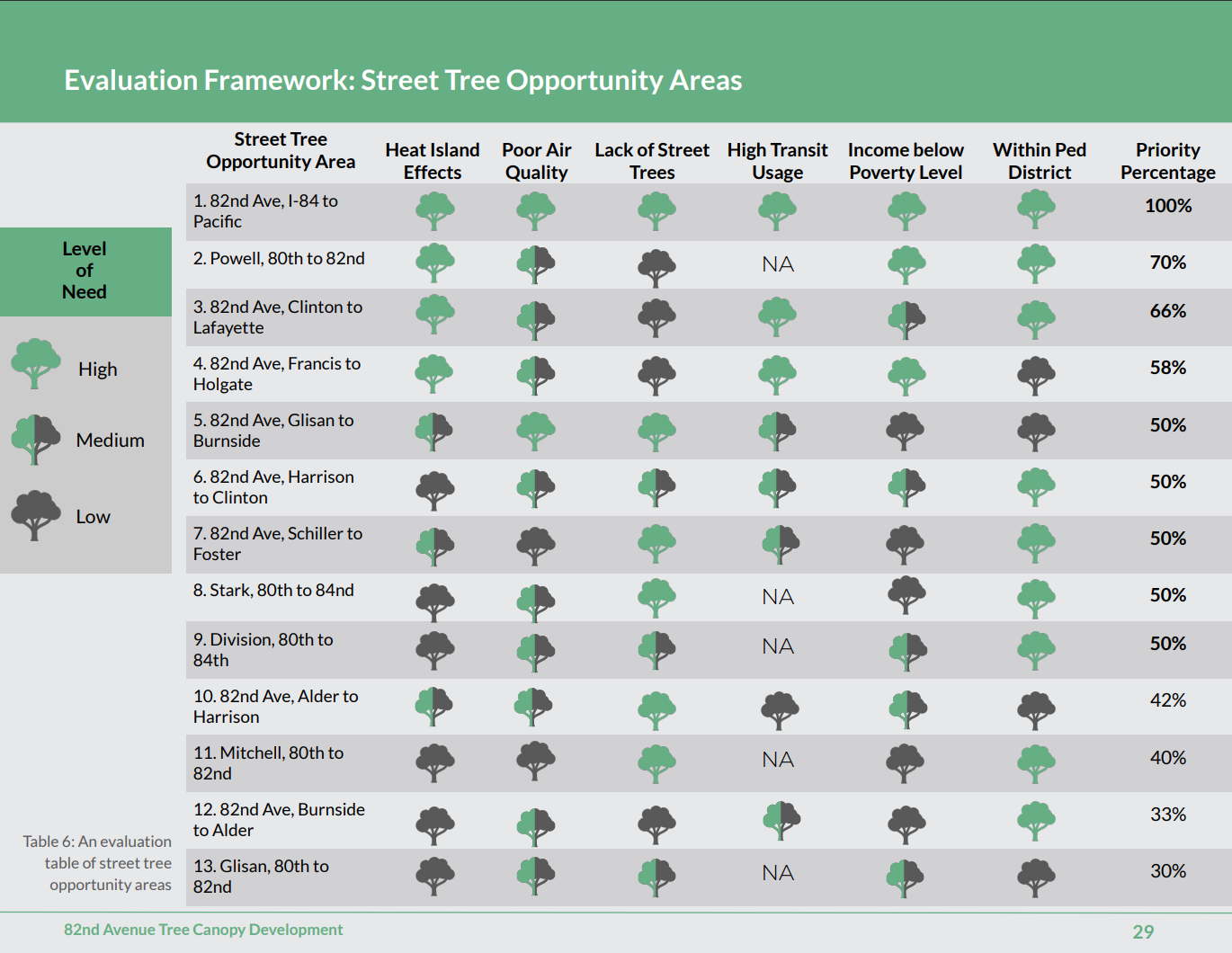New Report on 82nd Avenue Canopy Obstacles and Solutions
With PBOT in the throes of a multi-year project to improve the long neglected 82nd Avenue corridor, previously under state jurisdiction, a new, PSU study of why and how the City could green this commercial artery is very timely. On June 12 a team of five PSU Master of Urban and Regional Planning students presented to the public their 82nd Avenue canopy analysis, findings, and recommendations. Their work, part of their degree requirement, was conducted for Oregon Walks’ 82nd Avenue Coalition. The stretch of 82nd they examined is the 3.5 miles from I-84 south to Foster Road.
The report does a great job of prioritizing areas where trees should be planted by identifying where largest heat island effects are and connecting that information with low-canopy areas and high mass-transit rider stops. It also synthesizes, with a slew of compelling visuals, the findings of existing studies, and presents tangible ways to overcome current obstacles to expanding canopy along 82nd. One of the existing studies it draws on is that done in 2022 by TFLO’s Bruce Nelson together with Dave Hedberg. Bruce Nelson also helped guide the student team.
Some Key Findings
--Current street-tree conditions, tree siting, and space for and between trees along 82nd often conflict with City code.
--Seven of the 13 bus stops with the top 25 percent of onboarding ridership lack tree canopy or shade.
--Priority areas along 82nd that have little canopy and higher midday temperatures include the intersection with I-84; a stretch south of Montavilla; the Jade District; and Eastport Plaza (the map showing this is on p. 18, figure 5, of the report).
--Business owners along the corridor fear that large trees will block their signage, reduce parking lot space, and potentially cause them revenue loss. This report spotlights best design practices to address these concerns.
Some Key Recommendations
--Pilot innovative tree-planting financing models for sustainable tree canopy development and maintenance on public and private property along 82nd.
--Subsidize planting of evergreen species like live oaks to reduce the cost and frequency of leaf maintenance.
--Reduce the amount of impervious surfaces in the corridor.
--Engage the community in tree care and planting.
--Encourage the conversion of existing parking lots to sustainable parking lots, and create incentives to encourage property developers to go beyond the minimum required standards for new, sustainable parking lots with green infrastructure.
“Reduce the amount of impervious surfaces in the corridor.”
--Redesign for better tree protection and maintenance, and create more space for trees by introducing continuous planting strips, curb bump-outs, and bioswales.
--Transform private open spaces along 82nd into pocket gardens. To illustrate how to do this by depaving parts of impervious surfaces, the researchers developed a site plan for a pocket garden at Vestal Elementary School’s outdoor classroom, which currently is a 5,000-square-foot open space along 82nd whose surface is more than 90 percent paved. Read the full report here. Appendix A contains much more detail and Appendix B contains specific existing and proposed site plans.
Will City Leaders and Bureaus Act?
Whether or not the City Council and the heads of PBOT, the Bureau of Development Services, the Water Bureau, and the Bureau of Planning and Sustainability will incorporate any of the report’s worthy suggestions is unclear. These and other bureaus are involved in code requirements, administrative rules, and/or on-the-ground practices affecting trees and space for them in right-of-way space or on private sites under development.
“We should be listening to what young urban planners are showing us about the potential for holistic, meaningful transformation along 82nd Avenue. ”
PBOT is starting to think about ways to make some space for street trees by working with Parks’ Urban Forestry to pilot curb bump-outs along SE Duke Street. If that effort is successful, PBOT says they may replicate it elsewhere in the city. But that will depend on funds and the political will to change the status quo of how they typically carry out improvement projects.
Studies like this one are important for reaffirming and documenting the serious canopy deficiencies in a long-neglected area of East Portland. We should be listening to what young urban planners are showing us about the potential for holistic, meaningful transformation along 82nd Avenue. PBOT and the City are making plans, some of which are soon to be implemented, to improve 82nd. Let’s hope that in doing so they accept input like that from this report, and that bureau and City leaders exercise the vision and persistence to make bolder, more sustainable changes than what we’ve seen so far. Talking about correcting canopy equity is one thing. Doing something about it in a consistent, coordinated way across bureaus is something else.


